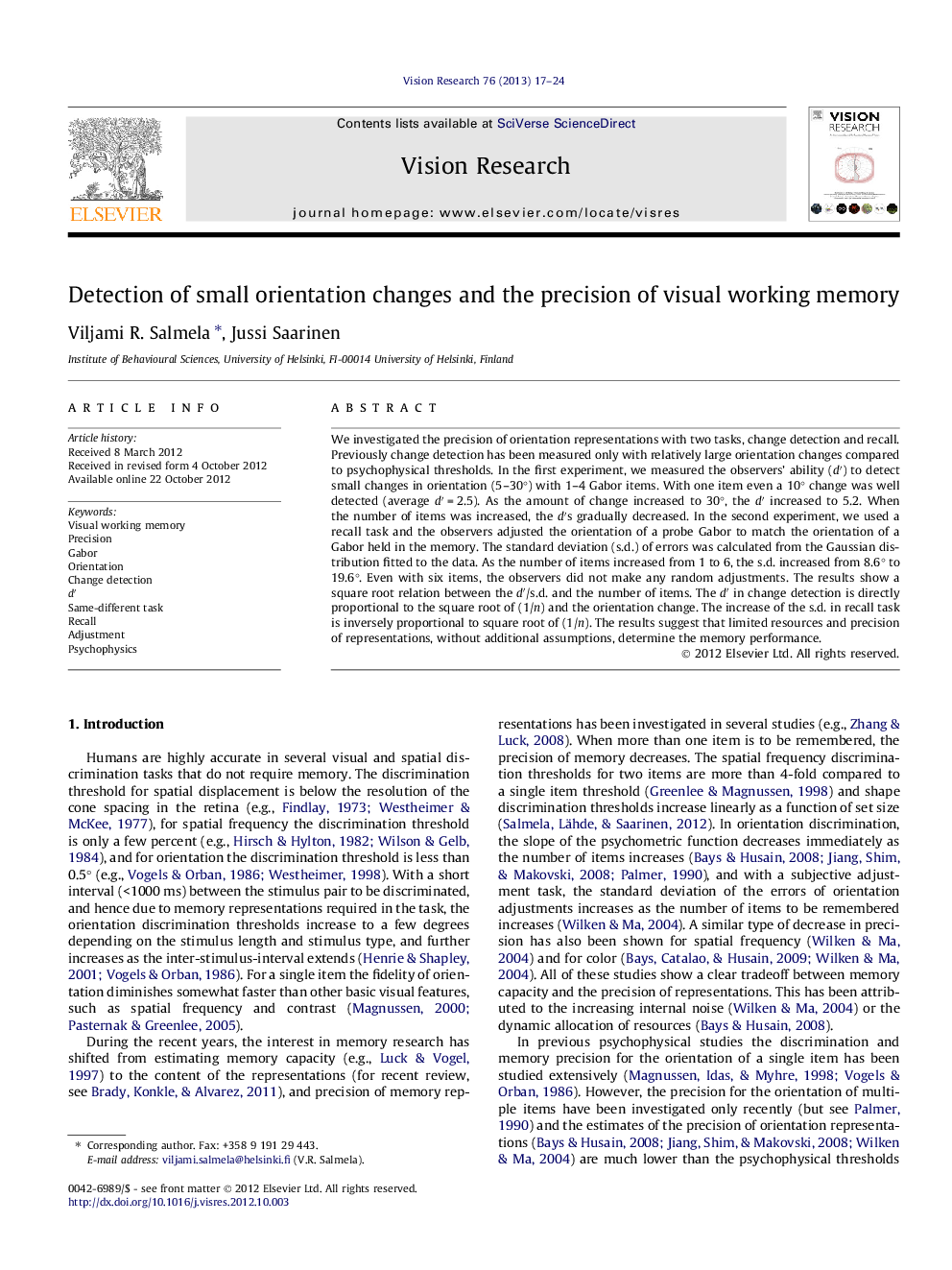| Article ID | Journal | Published Year | Pages | File Type |
|---|---|---|---|---|
| 6203626 | Vision Research | 2013 | 8 Pages |
We investigated the precision of orientation representations with two tasks, change detection and recall. Previously change detection has been measured only with relatively large orientation changes compared to psychophysical thresholds. In the first experiment, we measured the observers' ability (dâ²) to detect small changes in orientation (5-30°) with 1-4 Gabor items. With one item even a 10° change was well detected (average dâ²Â = 2.5). As the amount of change increased to 30°, the dâ² increased to 5.2. When the number of items was increased, the dâ²s gradually decreased. In the second experiment, we used a recall task and the observers adjusted the orientation of a probe Gabor to match the orientation of a Gabor held in the memory. The standard deviation (s.d.) of errors was calculated from the Gaussian distribution fitted to the data. As the number of items increased from 1 to 6, the s.d. increased from 8.6° to 19.6°. Even with six items, the observers did not make any random adjustments. The results show a square root relation between the dâ²/s.d. and the number of items. The dâ² in change detection is directly proportional to the square root of (1/n) and the orientation change. The increase of the s.d. in recall task is inversely proportional to square root of (1/n). The results suggest that limited resources and precision of representations, without additional assumptions, determine the memory performance.
⢠Precision of working memory for orientation measured with change detection and recall tasks. ⢠The dⲠin change detection and the s.d. in recall is proportional to the square root of (1/n). ⢠Limited resources, without additional assumptions, determine the memory performance.
